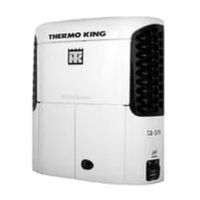Thermo King SB-310 Manuals
Manuals and User Guides for Thermo King SB-310. We have 1 Thermo King SB-310 manual available for free PDF download: Manual
Thermo King SB-310 Manual (159 pages)
Diesel powered, air cooling/heating unit
Brand: Thermo King
|
Category: Air Conditioner
|
Size: 9 MB
Table of Contents
Advertisement
